Horned Kichka (Russian: рогатая кичка) Is A Type Of Ancient Russian Headdress For A Married
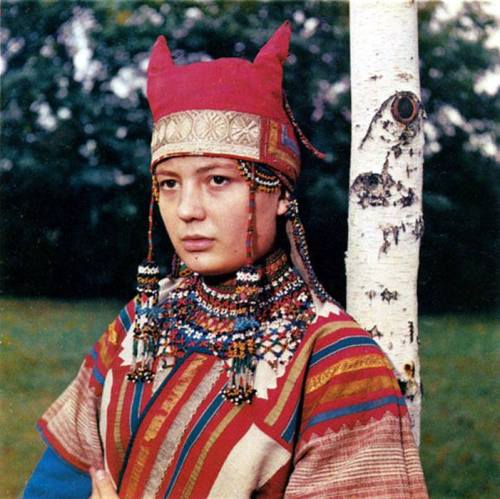
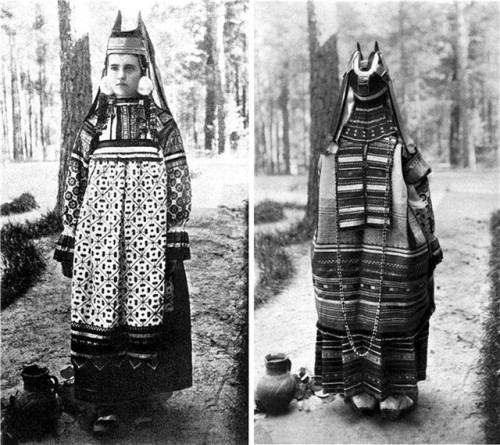
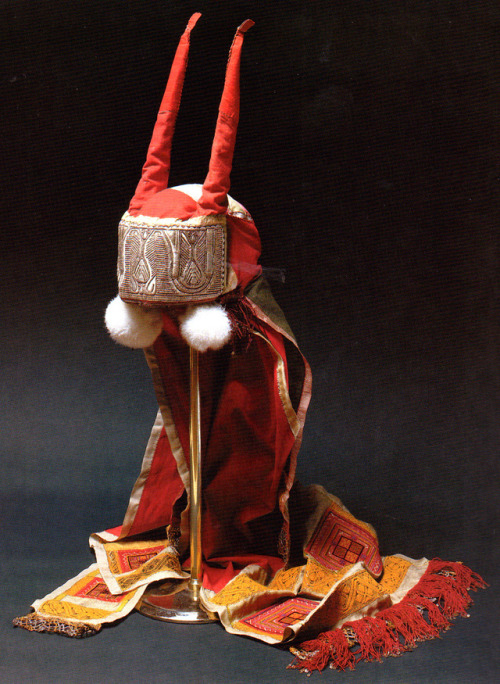
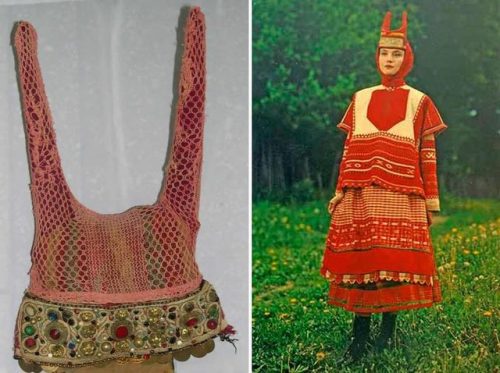
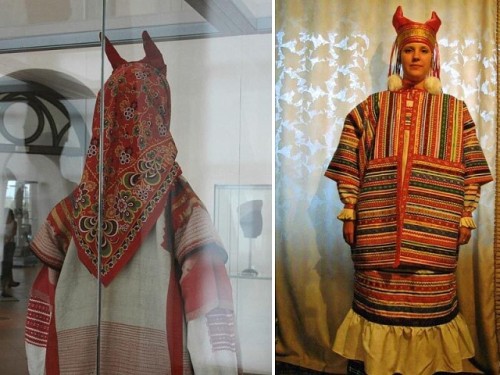
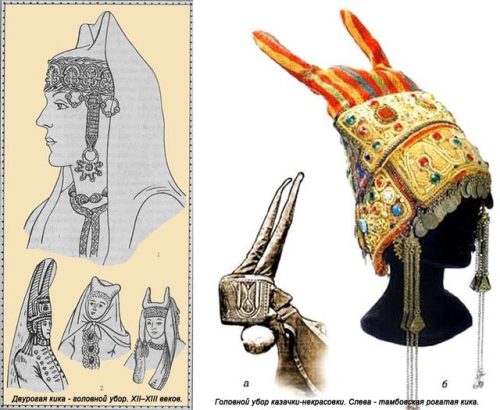
Horned kichka (Russian: рогатая кичка) is a type of ancient russian headdress for a married woman.
The horned kichka was a fertility symbol, and it served as a protection against evil spirits.
More Posts from Nastysynth and Others
Bird Symbolism
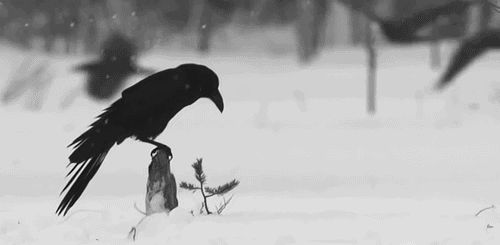
So I was looking out my window and saw two birds and the idea of making a list of symbolism associated with types of birds came to mind. My mom always taught me if you see an animal -especially if they are doing something out of the ordinary- you should take it as an omen. So here’s a list of some basic birds, some of the associations are personal but I hope you like it!
Blue Jay-the truth will be revealed, high energy, playfulness, clarity and communication.
Cardinal-hope, joy, good health, some associate them with angels or deceased love ones, passion and warmth.
Crow-often associated with magic and witches, transformation, power, intelligence and mystery.
Duck-friendships, new friends, happiness, good fortune and protect against negative energies “water off a ducks back” :)
Dove-peace, harmony, joy, love, might be telling you to break away from a toxic situation, think positive, often associated with Aphrodite or Jesus or Angels
Eagle-power, leadership, freedom, adventure, breaking free.
Hawk- common as spirit guides, courage, protection, and awareness.
Hummingbird- I adore hummingbirds and often associate them with faeries. Creativity, joy, love and beauty. Can be a sign that you are moving too fast in life and need to take a break.
Magpie-Magpies represent duality because seeing them can be really good or really bad, I know it’s confusing :/ Seeing a magpie can be a good luck omen and new oppurtunities will appear. They also represent illusion and trickery, maybe someone is being a two-faced friend to you.
Owl- wisdom, associated with the goddess Athena, intuition, spiritual exploration, change, observation and intelligence.
Raven- associated with the nordic god Odin, mystery, magic, fae magic, knowledge, mischieve, and can be seen as a death omen (but can also mean change)
Robin- luck, prosperity, good things will happen, joy and your hard work will soon be rewarded.
Sparrow- associated with Aphrodite, new love and relationships, fertility, team work, time of productivity and stop procrastinating.
Stork-long life, prosperity, fertility, new life, wisdom, take time to relax, motherhood and luck.
Swan- also associated with Aphrodite and Apollo, gracefulness, beauty, music, poetry, creativity, loyalty, and long lasting relationships.
Vulture-death, cleaning up other people’s messes, renewal, patient, use your resources and be perceptive.
Woodpecker- hard work, take advantage of new oppurtunities, attention, progress and determination.
Tip! If you are repeatedly seeing a certain animal or have a strong liking to an animal it could be a way a spirit guide is trying to get your attention (or that animal is just really common in your area lol )
Do you have any tips for drawing in the Pokemon style??
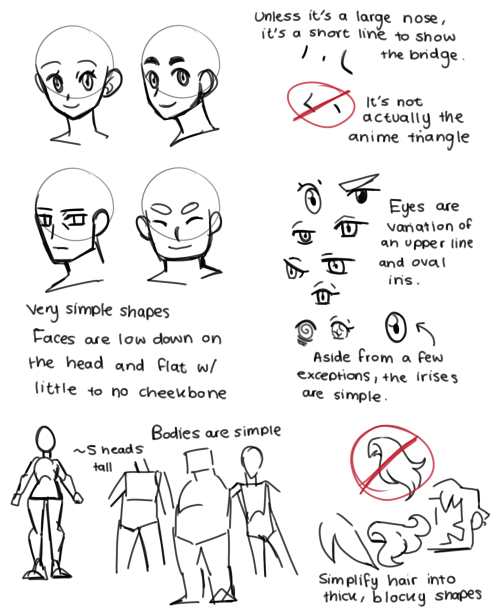
These are just some rough notes. I don’t draw that often in the pokemon style so these are a little more basic than I could give on other styles.
For colouring advice, this is a great resource to use: https://tunnaa-unnaa.tumblr.com/post/162328103349 It goes through the styles of different pokemon artists.
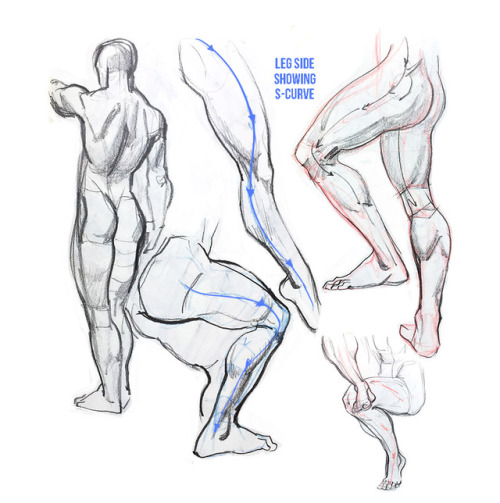
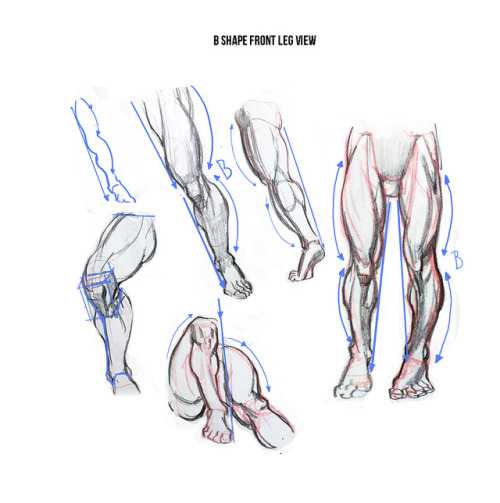
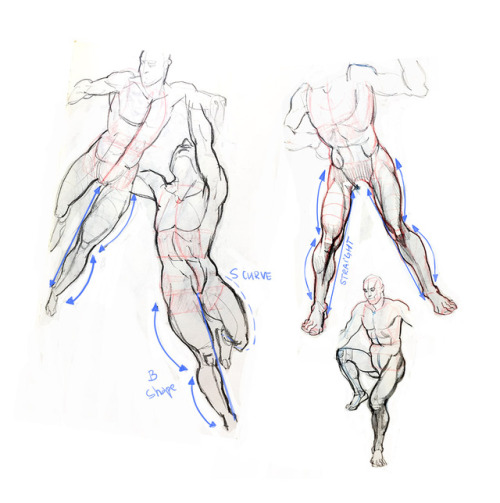
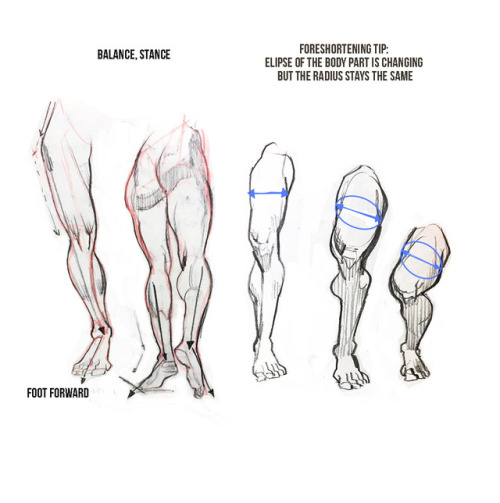
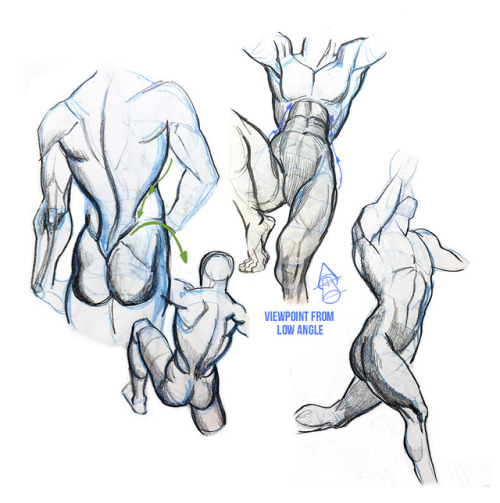
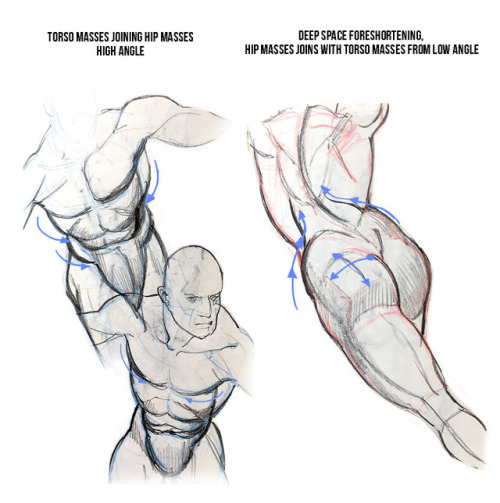
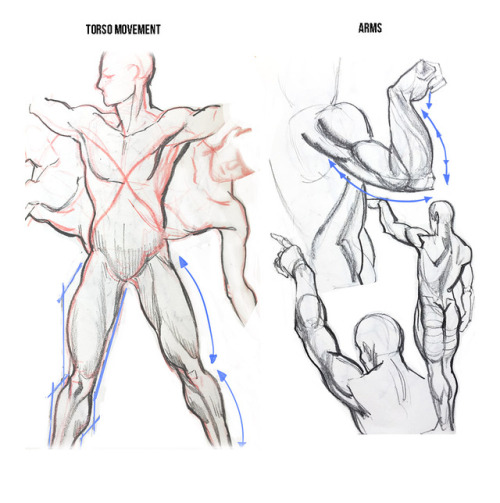
My opinion about Burne Hogarth’s ‘Dynamic figure drawing’
Some sketches and notes.
If you are artist that wants to learn anatomy or beginner artist and you are confused which resources to use to learn human figure you might find post helpful.
This is my take on the book and I want to share some thoughts after reading the book and practicing the topics. There are good things and thing I didn’t like and wouldn’t recommend. Just to give you answer to the question if I liked the book. Yes I liked it. But I want to give you honest opinion on good and not so good things so you as a student or always learning artist can decide if you want to use this book to learn. Let’s start with things I liked. It’s a book that covers unique topic: drawing figure in deep space and drawing without reference. I also liked that it doesn’t represent academic approach. Author rather helps people who had academic background and still have problems with drawing figure that isn’t standing straight like soldier. This book can help you fight stiffness in poses and helps generate ideas for dynamic poses. It teaches you how to draw figure in deep space, meaning : helps you create illusion of depth. Approach to drawing human body is also interesting. Hogarth recommend starting from torso and then adds secondary forms : limbs. This books helps you understand body curves so you don’t need to know anatomy. Actually this is something I like and at the same time I am not sure about. It’s good to know anatomy first before you get into this book. I would say that perfect audience for this book is student who has academic background but can only draw people standing straight like soldiers. Hogarth’s books will help you to invent interesting forms and positions. Although you can’t take his anatomy literally. He has very characteristic style, that isn’t realistic but is believable. “Dynamic figure drawing” many covers male body and there’s very little about female body. It’s because female body just doesn’t look good. It’s like female’s version of male bodies. Doesn’t look very organic and remind me of ancient greek statues. Just to give you example : breasts looks like they are balls attached to the chest. Definitely look for some other source about female body. Overall you can find some great tips and topics that are not covered in other books. This book is for already experienced artists who wish to learn techniques that will expand their academic knowledge. For anatomy look at Bridgman and Loomis 😃 I tried to keep this review as short as I could. Let me know how do you like these kind of reviews and if you would like to see more post like this one in the future.
Do you happen to have any tips for drawing horns?
Hi, Anon! I’ll definitely try my best. Horns are a little tricky since they’re so subjective and the styles/textures vary so drastically.
Mostly I’m going to be talking about texture here and I’ll try to keep it simple since they’re time consuming to draw.
Smooth horns are great and easy, can come in any and all shapes, but if you want to add more interest and character to the horns, it all comes down to how you texture them. Here’s a simple smooth horn. It’s okay, it’s basic, but it works and will especially work better once it’s colored if it has a sheen or a matte look.

You can add simple lines to it to give it a bit more interest, but you can take it farther than just the cylinder look like drawn here. The lines give it the easy, quick illusion of being more dimensional, but it’s not the most interesting or dynamic.

You can play with the lines however you like to give the horns more uniqueness, such as a line down the center to sort of pinch it inwards. Still more dynamic than the smooth horn, but more interesting than the rounded one.

You can leave the lines as they are for an easier horn, or take it a step farther and use them as guides to texture them. This is where it gets fun, but time consuming. Definitely look up references of what you want to go for if you’re not sure. I highly recommend Ram, Ibex or Antelope references, Antelope being my favorite. They have so much texture to them in the forum of smaller and larger ridges, so here’s a horn based loosely (artistic liberties taken) off a mix of Ram and Antelope.
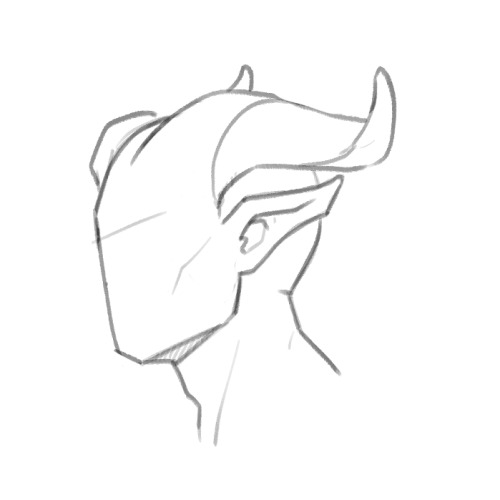

Getting into plates which are my favorite, there’s little to reference off of. Here’s a more dynamic, spiky look with plates using the guide lines as a base to get an ideal direction you want the horn to shape into.

Just take your guide lines and then extend outward. Add as little or as much wear, tear and damage as you want. Horns can get dry and crack, they can take a hit and break, age can cause grooves, your imagination’s the limit.

Outside of plates, you can look up any horned animal to get ideas for texture, anything from steer to deer and elk (if you want to get more into the antlered look), or mix and match textures from a few horn styles you like. Hope this helps! Sorry I can’t go more in depth, but I tried to explain it as best as I know how. Good luck with your horns!


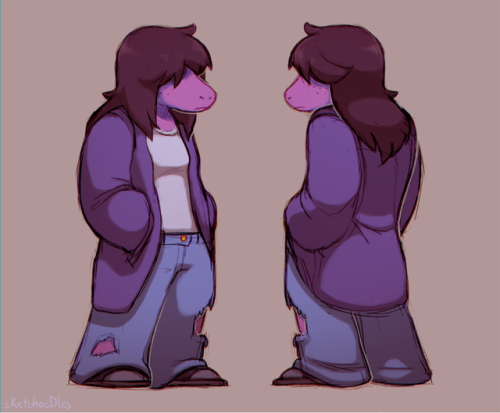
Some fun Susie sketches










Seriously, where did Steve find that armor? I hope he didn’t steal it from an aggressive warrior or something…I don’t want him to get in trouble, ya know? It’s been a year since this tutorial is on Patreon, so I’ll post it for everyone now! (I have to work on a reptile scales or transparent materials tutorial one day tho)
Underwater tutorial: https://darhak.tumblr.com/post/642964456883765248/steve-why-is-he-always-like-this-metal-tutorial
Fire tutorial: https://darhak.tumblr.com/post/186828219798/thats-my-first-and-probably-not-last-art
How to “Stained Glass”, Part 1: Lineart
Since I was asked how I do my stained glass look, I’m making this little tutorial to give y'all some pointers, so you too can make art that looks like this:

Broken up into two parts: Lineart and Coloring
Part two will follow soon!
[Read more for lenght also my first language is not english, but I hope everything is understandable!]
Czytaj dalej
so here’s my blender texturing guide! so many tutorial posts lately…
Czytaj dalej
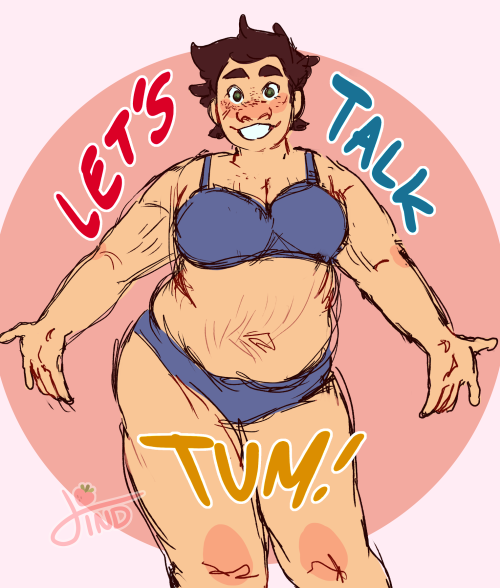


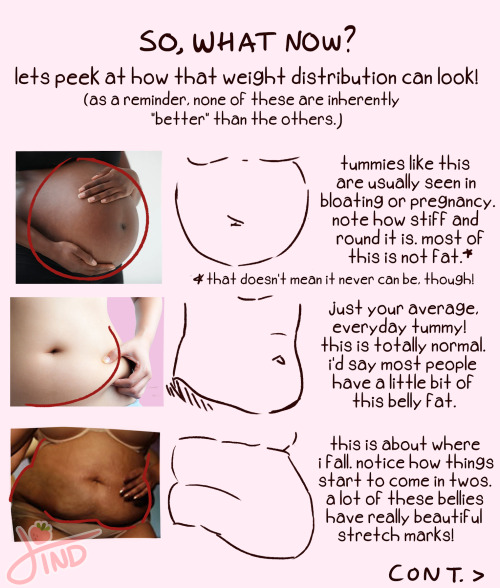






as requested- my zine about fat and plus size body types from instagram!💖 happy drawing everyone!
Quick art tip - child proportions
Ok this is a real quick one but let me show you how to get more-or-less accurate sizes for child characters. Kids are tricky to draw, they are - from toddler up to about teens people change radically almost every year so pinpointing character’s size during those years is pure hell.
What you need to do to make everything super easy for yourself is to check their Head Proportion. What makes kids look like - well, kids, is that their heads are proportionally large in comparison to their body.
Average adult is about 7,5 heads tall in comparison to their own body, however with children under 10 that number is just under 6 heads with about 1 head shorter the younger you go down to 3 heads as an infant.
Easiest way to figure the so-so head-height of a certain age is to find images of said age group and do a quick count on them

at which after you can replicate it in your own works - don’t mind if it’s not 1:1 with reference, finding images that are actually of the age you need is tricky and kids in general vary a lot so someone might be a lot taller than others. You have a bout 0,5 -1 heads of wiggle room before it starts to look way older.


Proportions are super important in art and i lovingly recommend everyone to figure out basics of them - it’s the easiest way to get notifically better with art. I could go on about proportions but let’s wrap this up. Need to note however that head proportion is not same as character height - a character can be 15 feet tall but still have head-height of 6, HH is simply a way to scale out the body.
-
 mydeaddad reblogged this · 1 week ago
mydeaddad reblogged this · 1 week ago -
 mydeaddad liked this · 1 week ago
mydeaddad liked this · 1 week ago -
 margonika00 liked this · 1 week ago
margonika00 liked this · 1 week ago -
 ignacia-la reblogged this · 1 week ago
ignacia-la reblogged this · 1 week ago -
 marfa-g liked this · 1 week ago
marfa-g liked this · 1 week ago -
 yes-how-to-do-it liked this · 3 weeks ago
yes-how-to-do-it liked this · 3 weeks ago -
 lukas1606 liked this · 3 weeks ago
lukas1606 liked this · 3 weeks ago -
 lukas1606 reblogged this · 3 weeks ago
lukas1606 reblogged this · 3 weeks ago -
 swordfries liked this · 3 weeks ago
swordfries liked this · 3 weeks ago -
 thetruemedialover liked this · 1 month ago
thetruemedialover liked this · 1 month ago -
 kadonneet reblogged this · 1 month ago
kadonneet reblogged this · 1 month ago -
 sweetroots liked this · 1 month ago
sweetroots liked this · 1 month ago -
 milna liked this · 1 month ago
milna liked this · 1 month ago -
 anzrusko13 reblogged this · 2 months ago
anzrusko13 reblogged this · 2 months ago -
 potashiio liked this · 2 months ago
potashiio liked this · 2 months ago -
 hanhan345 liked this · 2 months ago
hanhan345 liked this · 2 months ago -
 wildwood-faun liked this · 2 months ago
wildwood-faun liked this · 2 months ago -
 eclectichellmouth reblogged this · 2 months ago
eclectichellmouth reblogged this · 2 months ago -
 quintiliusheartripper liked this · 2 months ago
quintiliusheartripper liked this · 2 months ago -
 mil0111 liked this · 2 months ago
mil0111 liked this · 2 months ago -
 death-of-a-party-girl liked this · 2 months ago
death-of-a-party-girl liked this · 2 months ago -
 idiocracyyyy liked this · 3 months ago
idiocracyyyy liked this · 3 months ago -
 wokeisis reblogged this · 3 months ago
wokeisis reblogged this · 3 months ago -
 thesocietycallsmearoace12 liked this · 3 months ago
thesocietycallsmearoace12 liked this · 3 months ago -
 duxwriter liked this · 3 months ago
duxwriter liked this · 3 months ago -
 nksejaa liked this · 3 months ago
nksejaa liked this · 3 months ago -
 softest-wife liked this · 3 months ago
softest-wife liked this · 3 months ago -
 buggy-bottle-pop liked this · 4 months ago
buggy-bottle-pop liked this · 4 months ago -
 neemaneems liked this · 4 months ago
neemaneems liked this · 4 months ago -
 partialdignity reblogged this · 4 months ago
partialdignity reblogged this · 4 months ago -
 catgirl-for-hire liked this · 4 months ago
catgirl-for-hire liked this · 4 months ago -
 ordinarydream liked this · 4 months ago
ordinarydream liked this · 4 months ago -
 whythou reblogged this · 4 months ago
whythou reblogged this · 4 months ago -
 bicyclebicyclesbicycles liked this · 4 months ago
bicyclebicyclesbicycles liked this · 4 months ago -
 tribadismes reblogged this · 4 months ago
tribadismes reblogged this · 4 months ago -
 tribadismes liked this · 4 months ago
tribadismes liked this · 4 months ago -
 ehbahpu reblogged this · 4 months ago
ehbahpu reblogged this · 4 months ago -
 hagsplaining liked this · 4 months ago
hagsplaining liked this · 4 months ago -
 elfette liked this · 4 months ago
elfette liked this · 4 months ago -
 fortheloveoflila reblogged this · 4 months ago
fortheloveoflila reblogged this · 4 months ago -
 crockwood liked this · 4 months ago
crockwood liked this · 4 months ago -
 witheon liked this · 4 months ago
witheon liked this · 4 months ago -
 motorskates liked this · 4 months ago
motorskates liked this · 4 months ago -
 klapooon liked this · 4 months ago
klapooon liked this · 4 months ago -
 beeftweest liked this · 4 months ago
beeftweest liked this · 4 months ago -
 hemiamae liked this · 4 months ago
hemiamae liked this · 4 months ago

Sylwester | i will mostly post sketches, because i'm too lazy to end them
196 posts